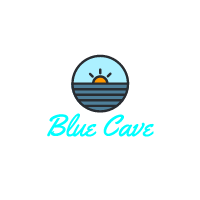The Blue Cave is a natural formation on the island of Biševo in Croatia. It was formed by the wave action of the sea. The cave was known only to locals until 1884 when it was opened to the public by Baron Eugen von Ransonnet.
Who discovered the Blue Cave?
Locals had known about the Blue Cave for centuries. However, it wasn’t introduced to the wider world until Baron Eugen von Ransonnet, an Austrian artist, described it in 1884.
When was the Blue Cave first opened to the public?
The Blue Cave was opened to the public in 1884 after a man-made entrance was created at the command of Baron Eugen von Ransonnet.
How was the Blue Cave formed?
The Blue Cave was formed over thousands of years by the erosive action of the Adriatic Sea’s waves on the limestone of Biševo island.
Has the Blue Cave always been blue?
The blue color of the Blue Cave is due to a natural phenomenon where sunlight refracts through the water and reflects off the cave’s white limestone floor. It can be assumed that as long as the conditions are right, the cave has always exhibited this blue light.
Blue cave tour Croatia
Who was Baron Eugen von Ransonnet and why is he associated with the Blue Cave?
Baron Eugen von Ransonnet was an Austrian artist and explorer who popularized the Blue Cave after discovering it during his travels. He suggested the construction of an artificial entrance to make it accessible to tourists.
How did locals use the Blue Cave before it became a tourist attraction?
There’s no precise historical record of how locals used the Blue Cave before it was opened to the public. Due to its small, inaccessible entrance, it may not have seen much human use.
What has changed in the Blue Cave since it became a tourist attraction?
The main change is the creation of the artificial entrance that allows small boats to enter. The increase in visitors has also led to rules and regulations to protect the cave and its natural beauty.
Are there any legends or myths associated with the Blue Cave?
While there are no widely-known myths or legends specifically about the Blue Cave, the general area is rich in folklore and local seafaring tales.
What makes the Blue Cave historically significant?
The Blue Cave is historically significant as a natural wonder that has attracted visitors for well over a century. It also represents the unique karstic phenomena typical of the Adriatic coast.
Were there any archaeological discoveries in the Blue Cave?
The Blue Cave is not known for archaeological finds. Its significance lies more in its natural beauty and geological formation.
Have there been any famous visitors to the Blue Cave?
While there may have been numerous notable visitors over the years, specific names are not typically recorded or publicized.
How has tourism impacted the Blue Cave and its surroundings?
Tourism has brought economic benefits to the area, but has also necessitated measures to protect the cave’s delicate natural beauty from human impact.
Has the Blue Cave ever been closed to the public?
There have been instances when the Blue Cave was temporarily closed due to weather conditions, but no long-term closures have been reported.
Is the Blue Cave recognized by any international conservation or heritage organizations?
While the Blue Cave is not currently listed as a UNESCO World Heritage Site, it is recognized and protected under Croatian law.
Are there any historical events associated with the Blue Cave?
Other than its discovery and opening to the public, no specific historical events are associated with the Blue Cave.
Has the appearance or condition of the Blue Cave changed over the years?
The Blue Cave is a natural formation, and like all caves, experiences slow geological changes over long periods. However, the cave as seen by visitors today is believed to be much the same as when it was first opened to the public.
How was the artificial entrance to the Blue Cave constructed?
The artificial entrance was constructed by using tools to create a narrow opening just large enough for small boats to pass through.
How long did it take to make the Blue Cave accessible to the public?
It’s not documented how long the process took, but the work was completed in the same year Baron Ransonnet suggested it, in 1884.
Has the Blue Cave been featured in any films or documentaries?
The Blue Cave, with its stunning natural beauty, has likely been used as a backdrop in various travelogues and nature documentaries.
Was the Blue Cave used for any purpose during the wars in the 20th century?
There are no records to suggest that the Blue Cave was used for any specific purpose during the wars of the 20th century.
How did the locals react when the Blue Cave was opened to the public?
While there are no detailed historical records of local reactions, the increased tourism would have likely brought new economic opportunities.
Has there been any controversy or conflict related to the Blue Cave?
There have been debates about the environmental impact of tourism and the need to balance this with local economic needs, but no major conflicts are associated with the Blue Cave.
Are there any books or academic studies about the history of the Blue Cave?
There may be academic studies focusing on the geological aspects of the Blue Cave. It’s also likely been included in travel books about Croatia. However, there are no known books solely dedicated to the history of the Blue Cave.
